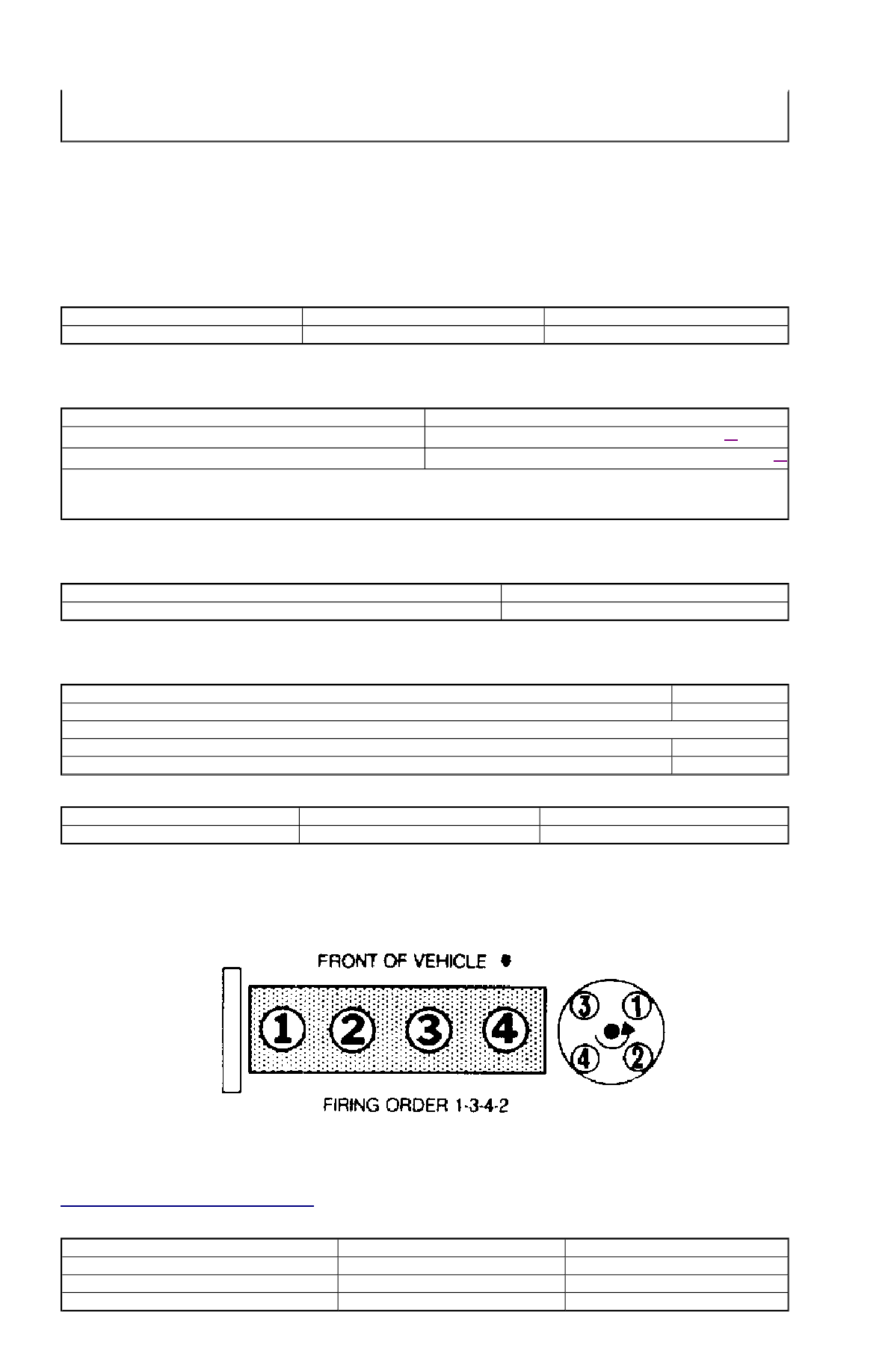Ford Festiva. Instruction - part 39

VALVE CLEARANCE
IGNITION SYSTEM
IGNITION COIL
IGNITION COIL RESISTANCE
CRANKSHAFT POSITION SENSOR
CRANKSHAFT POSITION SENSOR RESISTANCE
HIGH TENSION WIRE RESISTANCE
HIGH TENSION WIRE RESISTANCE
SPARK PLUGS
SPARK PLUG TYPE
SPARK PLUG SPECIFICATIONS
FIRING ORDER & TIMING MARKS
Fig. 1: Firing Order & Distributor Rotation
IGNITION TIMING
(1)
Information is not available.
(2)
Lowest cylinder compression reading should not be less than 75 percent of highest cylinder compression reading.
NOTE:
All models are equipped with hydraulic lash adjusters. No adjustments are required.
Application
Primary (Ohms)
Secondary (Ohms)
1.3L & 1.6L
0.8-1.6
6000-30,000
Application
Ohms
1.3L
(1)
210-250
1.6L
(2)
(1)
Measured between CPS (Yellow/Blue) and GND terminal.
(2)
Capri is equipped with Cylinder Identification (CID) sensor. Resistance is not specified.
Application
Ohms
Coil Wire & Spark Plug Wires
4000-6000 per foot
Application
Motorcraft
1.3L
AGS32C
1.6L
Non-Turbo
AGSP32C
Turbo
AGS32C
Application
Gap: In.- (mm)
Torque: Ft.-Lbs./(N.m)
1.3L & 1.6L
.039-.043 (1.0-1.1)
10-17 (14-23)
Application
Auto. Trans.
Man. Trans.
1.3L
9-11 @ 850
9-11 @ 700
1.6L Non-Turbo
1-3 @ 850
0-4 @ 850
1.6L Turbo
10-14 @ 850
0-4 @ 850